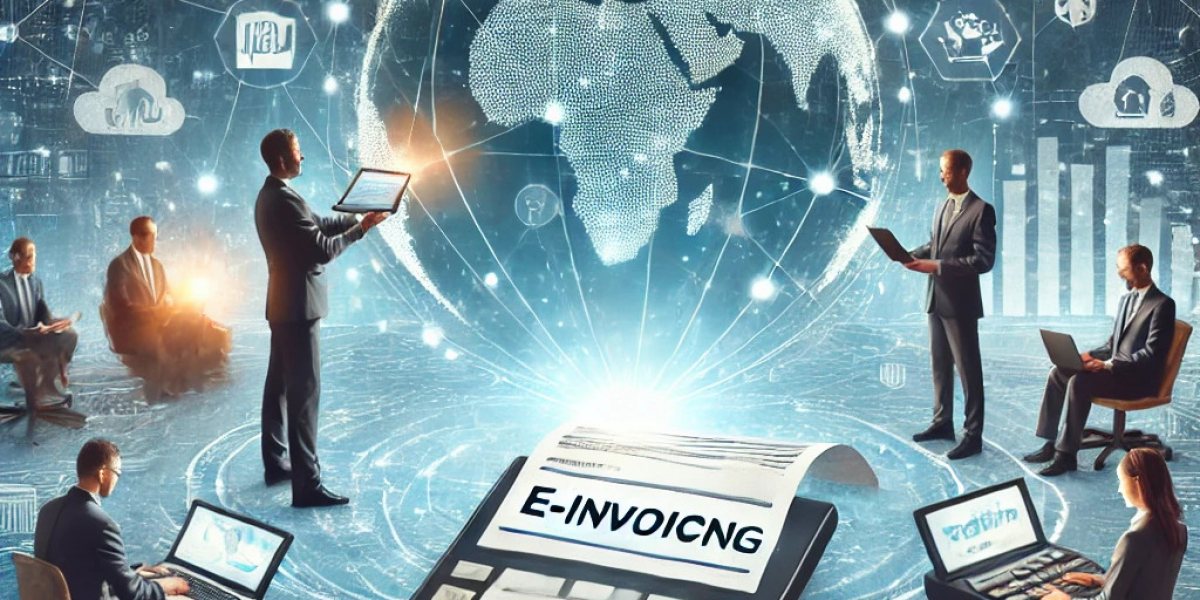An e-invoice, short for electronic invoice, is a digital version of a traditional paper invoice. Unlike PDFs or scanned documents, e-invoices are created, transmitted, and processed in a structured digital format, allowing seamless integration with accounting systems and other financial tools. This modern approach to invoicing eliminates manual handling, reduces errors, and improves efficiency.
Why Are E-Invoices Important?
E-invoicing is becoming increasingly important as businesses worldwide move toward digital transformation. Governments and businesses alike are adopting e invoice to streamline operations, improve transparency, and reduce tax fraud. For example, countries like the UK and the USA have introduced regulations encouraging or mandating e-invoicing in specific sectors.
Key Benefits of E-Invoicing
Efficiency: E-invoices automate the invoicing process, reducing the time spent on manual data entry and minimizing errors.
Cost Savings: By eliminating the need for paper, printing, and postage, businesses can save significant costs.
Faster Payments: With automated processing, e-invoices can be reviewed and approved faster, leading to quicker payments.
Improved Accuracy: The structured format reduces the risk of errors and discrepancies, ensuring smooth transactions.
Environmental Benefits: Going paperless reduces waste, contributing to sustainability efforts.
Regulatory Compliance: Many governments require or encourage e-invoicing to enhance tax compliance and reduce fraud.
How Does E-Invoicing Work?
E-invoicing involves the exchange of invoice data between the supplier’s and buyer’s accounting systems. Here’s how the process typically works:
Invoice Generation: The supplier’s accounting or ERP system generates an e-invoice in a structured format, such as XML or EDI.
Transmission: The e-invoice is transmitted to the buyer via a secure channel, often through an e-invoicing platform or a government-mandated portal.
Validation: The buyer’s system validates the e-invoice to ensure it meets the required format and contains all necessary information.
Processing: Once validated, the e-invoice is processed for payment within the buyer’s accounting system.
Archiving: Both parties store the e-invoice digitally for future reference and compliance purposes.
E-Invoicing Standards and Formats
E-invoicing standards vary depending on the region and industry. Some common formats include:
PEPPOL (Pan-European Public Procurement Online): Widely used in Europe, it ensures interoperability across borders.
UBL (Universal Business Language): A globally accepted XML-based standard.
EDI (Electronic Data Interchange): Often used in industries like retail and manufacturing.
ANSI X12: Commonly used in the USA for electronic data exchange.
In the UK, the HMRC recommends PEPPOL for businesses dealing with public sector organizations. Meanwhile, the USA follows ANSI X12 and other formats depending on the industry.
E-Invoicing Regulations Around the World
United Kingdom
In the UK, e-invoicing is gaining traction, particularly in public procurement. The government has mandated the use of e-invoices for suppliers to public sector entities, aligning with the European Directive on e-invoicing. Businesses are encouraged to adopt e-invoicing to improve efficiency and ensure compliance.
United States
The USA does not have a universal mandate for e-invoicing but encourages its adoption in specific sectors, such as healthcare and government procurement. Standards like ANSI X12 and EDI are commonly used.
European Union
The EU has been a leader in e-invoicing adoption, with the European Directive 2014/55/EU requiring public sector entities to accept e invoice. PEPPOL is the preferred standard across EU member states.
India
India introduced mandatory e-invoicing for businesses above a certain turnover threshold. The system is integrated with the GST network, ensuring real-time reporting and compliance.
Latin America
Countries like Brazil, Mexico, and Chile have implemented mandatory e-invoicing to combat tax fraud and improve transparency. These nations are often considered pioneers in e-invoicing.
How to Implement E-Invoicing in Your Business
Transitioning to e-invoicing may seem daunting, but with the right approach, it can be seamless. Here are the steps to get started:
Evaluate Your Needs: Assess your current invoicing process and identify pain points that e-invoicing can address.
Choose the Right Software: Select an e-invoicing solution that integrates with your existing systems and supports the required formats.
Understand Regulatory Requirements: Familiarize yourself with the e-invoicing regulations in your region and industry.
Train Your Team: Provide training to your staff to ensure they understand the new system and its benefits.
Test the System: Conduct pilot tests to identify any issues and ensure smooth implementation.
Monitor and Optimize: Continuously monitor the system and make necessary adjustments to improve efficiency.
Top E-Invoicing Solutions
Several e-invoicing solutions cater to businesses of all sizes. Here are some popular options:
SAP Ariba: Ideal for large enterprises, it offers robust e-invoicing features.
QuickBooks Online: Suitable for small and medium-sized businesses, it simplifies invoicing and integrates with accounting systems.
Xero: A cloud-based platform with user-friendly e-invoicing capabilities.
Zoho Invoice: A cost-effective solution for small businesses.
Coupa: Known for its comprehensive spend management features, including e-invoicing.
Common Challenges in E-Invoicing and How to Overcome Them
While e-invoicing offers numerous benefits, businesses may encounter challenges during implementation. Here are some common issues and their solutions:
Resistance to Change: Employees may be hesitant to adopt new systems. Solution: Provide training and highlight the benefits of e-invoicing.
Integration Issues: Ensuring compatibility with existing systems can be challenging. Solution: Choose software that offers seamless integration.
Regulatory Compliance: Understanding and adhering to local regulations can be complex. Solution: Work with a provider familiar with regional requirements.
Data Security Concerns: Protecting sensitive financial data is crucial. Solution: Use secure platforms with robust encryption and compliance certifications.
The Future of E-Invoicing
The adoption of e-invoicing is expected to grow significantly in the coming years, driven by advancements in technology and increasing regulatory requirements. Emerging trends include:
Blockchain Technology: Blockchain can enhance security and transparency in e-invoicing.
Artificial Intelligence: AI-powered tools can automate data validation and anomaly detection.
Global Standardization: Efforts are underway to develop universal e-invoicing standards to facilitate cross-border trade.








